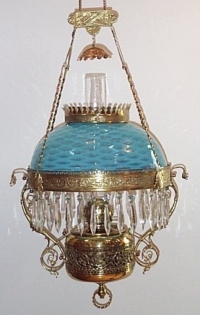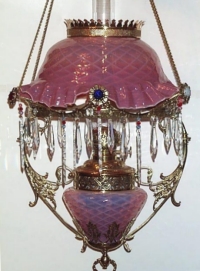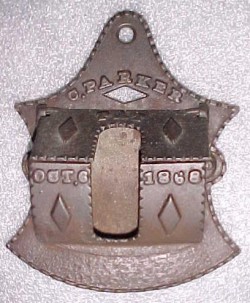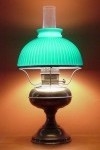The Charles Parker Company was assigned at least thirty-nine lighting-related patents between June 12, 1860 and July 6, 1897. See the patent table below for details. The Parker Story identifies 257 patents assigned to or invented by Parker family members or employees of the Parker companies. In the lighting arena, noteworthy inventors include Dexter Wright Parker, Charles Parker's youngest son, with twenty-two patents, fourteen patents granted for lamps individually, and eight patents granted jointly, mostly in conjunction with Lewis F. Griswold. Griswold's name appears on at least twenty-four patents. Dexter Wright Parker would eventually become president of the Charles Parker Company when his father passed away on January 31, 1902.
 Search Chas. Parker Co.'s Patents Search Chas. Parker Co.'s Patents
To view any of the above patents, enter the number in the box below and select Query USPTO Database. This will take you to the specific patent images on the U.S. Patent & Trademark Office Database. Learn more about the USPTO here. References
| |||||||||||||||||||||||||||||||||||||||||||||||||||||||||||||||||
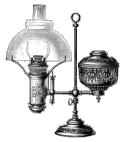
| Reference Desk | Lamp Information | Other Resources | On-Line Shopping |

Purveyors of Antique Lighting and Accessories
435 Main Street
 Hurleyville, New York 12747
Hurleyville, New York 12747
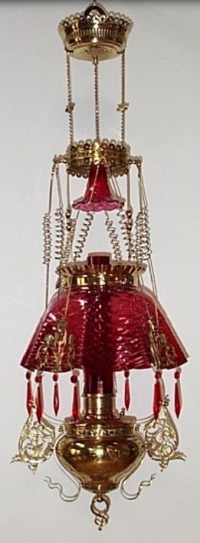 Photo: Jeff Ebersole
Photo: Jeff Ebersole |
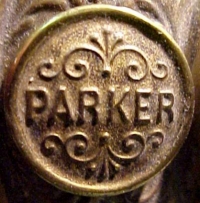 Parker Filler Cap
Parker Filler Cap |
 Parker Flame Spreader
Parker Flame Spreader--------------------- Enlarge image [+] |
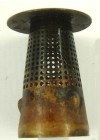 Parker Flame Spreader
Parker Flame SpreaderDexter W. Parker's Pat. No. 401,583 April 16, 1889 --------------------- Enlarge image [+] |
a brief historical profile of

The Charles Parker Company
^ Top of Page
Privacy Policy | Terms and Conditions of Use | Announcements
Copyright © 2001-2011 ~ Daniel Edminster | The Lampworks ~ All Rights Reserved
